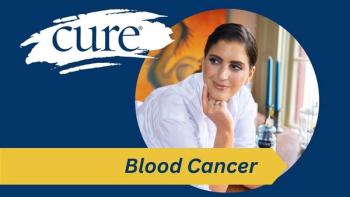
Attending Annual Check-Ups is Key for Survivors of Bone Marrow Transplants
Survivors of blood and bone marrow transplants attend fewer annual check-ups, but researchers urge annual visits for life to prevent complications.
Long-term survivors of blood and bone marrow transplantations (BMT) should attend annual visits with their doctors to reduce high healthcare utilization or visits to the ER, an expert told CURE®.
Years after receiving BMT, long-term survivors did not attend annual visits with their doctors over time, a study from the journal Cancer determined.
The study included 3,342 survivors of BMT, in which 46% of patients identified as women, the median age was 46 years and 75% of patients identified as non-Hispanic White.
The researchers from the study also found that patients who received autologous stem-cell transplants were aged 65 and older and identified as Black, compared with patients who received allogeneic stem-cell transplants.
Autologous stem-cell transplants are when the patient’s stem cells are collected and stored before treatment and are returned to the patient after treatment, according to the National Cancer Institute.
Allogeneic stem-cell transplants refer to a procedure in which a patient receives stem cells from a donor who is genetically similar to the patient, as defined by the National Cancer Institute. Receiving stem cells through this type of transplant replaces the patient’s stem cells that may have been harmed by chemotherapy or radiation treatments with healthy stem cells.
“When we talk about healthcare utilization, we’re talking about whether (patients had) seen a family practitioner, whether they had come to the cancer center or whether they had had a visit with a doctor that was related to their original cancer for which they had undergone transplant,” Dr. Smita Bhatia, professor of pediatric oncology, division of pediatric hematology-oncology and director, Institute for Cancer Outcomes and Survivorship at the University of Alabama at Birmingham, explained in an interview with CURE®.
The study, led by Marian Oliver, a student of Bhatia’s, analyzed the frequency of healthcare in patients and noted that there was a difference between people who were one to five years post-BMT and those who were 20 or more years post-BMT.
“The most important thing was that healthcare utilization, meaning the number of people who said that they did go see a doctor for health concerns, declined over time,” Bhatia said. “From transplant, such that those who had survived 20 or more years, only about 50% of the people went to see their doctor. Normally, the expectation would be that 100% of the people would go at least once in the past two years to see a regular doctor for check-ups. Less than 40% had visits related to BMT and about 30% have actually gone to the transplant center, or the place where their cancer was treated, to get care in the past few years.”
Researchers also established that the type of cancer played a role in how frequently the survivor sought care from a doctor. Specifically, patients with lymphoma who were two to five years post-BMT had reported attending routine check-ups 88% of the time. However, it declined to 65% after 11 to 15 years post-BMT.
Factors such as sociodemographic characteristics and absence of morbidity also played a role in survivors’ behavior toward receiving care annually, according to the study. Sociodemographic factors that affected healthcare utilization included education levels, insurance coverage and levels of income.
Surviving longer after transplantation and the belief in lower morbidity led survivors to think that they were cured, the study stated, and Bhatia emphasized that “(every patient) should get a check-up at least once a year after transplantation to prevent any of the bad complications from actually occurring.”
For more news on cancer updates, research and education, don’t forget to





